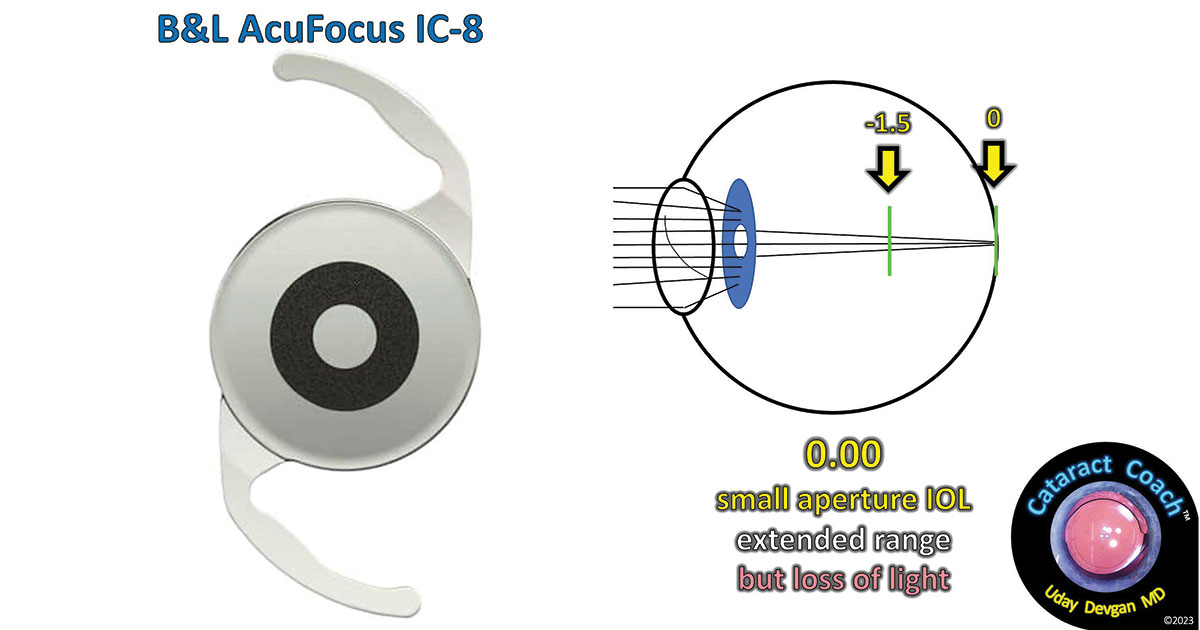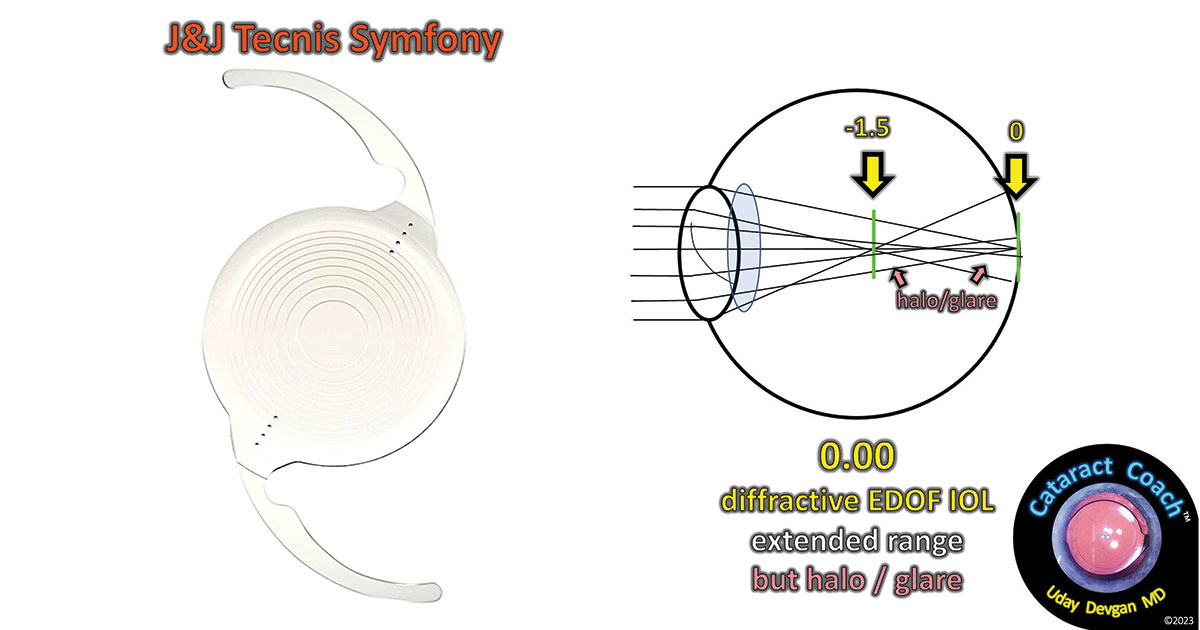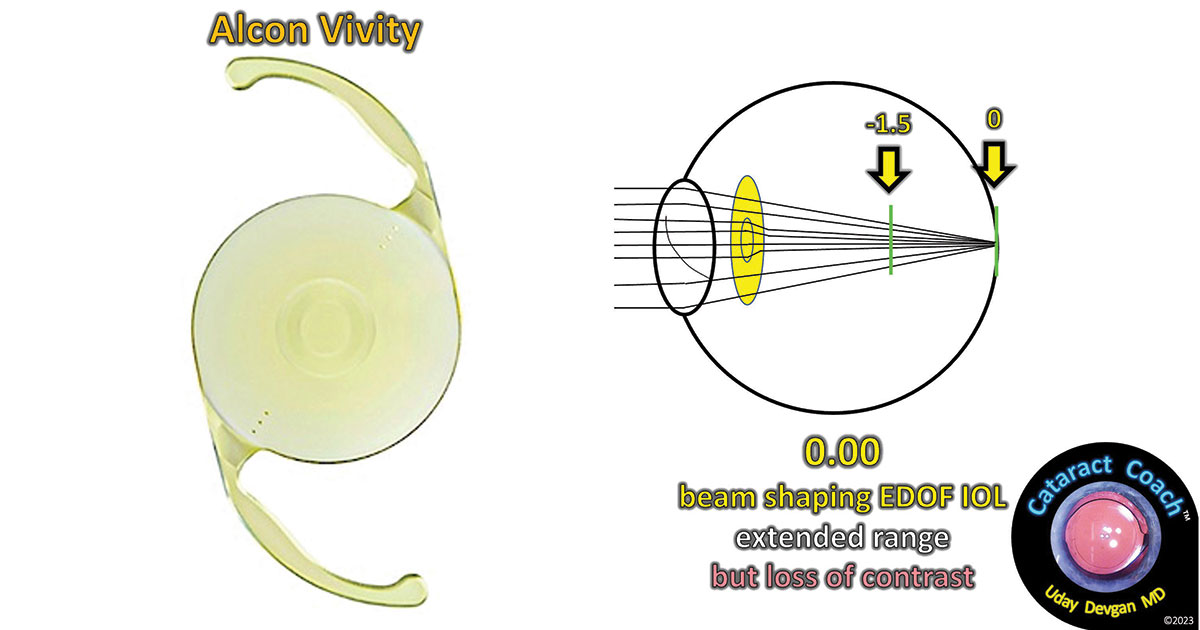Choose extended depth of focus IOL that will have best results with fewest compromises
Our goal in cataract surgery is to restore vision to our patients and also to tailor the results to their needs.
While some patients would be very happy with a monofocal IOL and a target of great distance vision while using reading glasses for near work, some patients have a strong desire to lessen their dependence on spectacles. The two primary designs for giving patients a wider range of vision without glasses are multifocal IOLs and extended depth of focus (EDOF) IOLs, each having their own benefits and compromises.


Multifocal IOL designs, typically trifocal or bifocal in nature, split the incoming light using diffractive optics, thereby providing a wide range of vision with a near addition of up to 3.5 D. This allows vision from far distance to as close as 30 cm (12 inches) without glasses, provided that there is sufficient illumination. The compromise is that this splitting of light into multiple zones decreases contrast and induces glare/halos, particularly at night.
EDOF IOLs aim to lessen the compromises of these multifocal IOL designs but, as a result, produce less range without glasses, typically about 1.5 D. This allows vision from far distance to as close as 67 cm (26 inches) without glasses. If used in a mild monovision approach with one eye at emmetropia and the other eye at –1 D, this can be extended to a binocular range of 2.5 D, which brings the near point closer to about 40 cm (16 inches). Because residual astigmatism can also increase the depth of field, we compare these EDOF models in eyes with emmetropia and no residual cylinder (Figure 1). The three main EDOF IOL designs available in the U.S. are small aperture, diffractive optics and beam shaping.
Small aperture EDOF IOLs
The small aperture EDOF IOL that we have is the AcuFocus IC-8 Apthera (Bausch + Lomb), which was FDA approved in 2022. The original AcuFocus product was an intracorneal inlay for the treatment of presbyopia, and it was also relatively easy to integrate into a concomitantly performed LASIK procedure with a thick enough corneal flap. Many patients enjoyed the benefits of this inlay, but some had difficulties with the cornea accepting the foreign object. The optical engineers then incorporated this same small aperture concept to intra-IOL placement where it would likely pose no issues for long-term implantation.
The IC-8 Apthera has a 6-mm optic with a central donut filter ring that has an outside diameter of 3.23 mm and a central zone of 1.36 mm in diameter (Figure 2). This makes the effective pupil size in most lighting conditions very small and takes advantage of this pinhole effect. The upside is that the range of vision increases dramatically, much like using a small aperture on a camera (such as f-stop f/22), which provides a wide field of view in sharp focus. This can also be beneficial in some cases in which irregular corneas from prior radial keratotomy or ectasia cause optical aberrations. The downside of this pinhole pupil is that much of the incoming light is lost. In bright daylight, this is virtually unnoticeable; however, in dim lighting conditions such as driving at night, there is a significant loss of illumination. For this reason, the labeling of this IOL recommends only unilateral implantation in the nondominant eye while the fellow eye receives a traditional monofocal IOL set to emmetropia.

Diffractive ring EDOF IOLs
The Johnson & Johnson Tecnis Symfony (formerly AMO, then Abbott) uses a series of diffractive rings on the optic to expand the range of vision without glasses. This design was approved in 2016 and has a good track record of providing less reliance on reading glasses, particularly for the intermediate range of 67 cm (26 inches). Successive diffractive rings split the incoming light into a wider range, which gives the increased depth of focus, but it comes with the compromise of inducing glare/halos, particularly at night (Figure 3). In my experience, this IOL design produces some of the most bothersome nighttime dysphotopsias in patients, and that may limit its applicability.

Beam-shaping EDOF IOLs
The Alcon Vivity uses a central 2.2-mm beam-shaping element on the 6-mm optic in order to elongate the depth of focus to about the same range as these other EDOF designs (Figure 4). This IOL was FDA approved in 2020, and it has a good track record of providing a wider range of vision. This design is more dependent on the patient’s pupil size because those patients with larger pupils may get less effect because less of the light entering the eye passes through this focusing zone. In addition, choosing a refractive target may have more dependence on pupil size compared with the other IOL designs. While this IOL does not typically induce night glare/halos, it will limit the contrast, particularly at night.

In my clinic and surgery center, we offer all these EDOF IOL designs because none is perfect for every patient. We must balance the patient’s needs and desires with their ocular anatomy and biometric data to choose which option will give the best result with the fewest compromises.
A video of these surgeries can be found at https://cataractcoach.com/?s=extended.
- For more information:
- Uday Devgan, MD, in private practice at Devgan Eye Surgery and a partner at Specialty Surgical Center in Beverly Hills, California, can be reached at devgan@gmail.com; website: www.CataractCoach.com.
